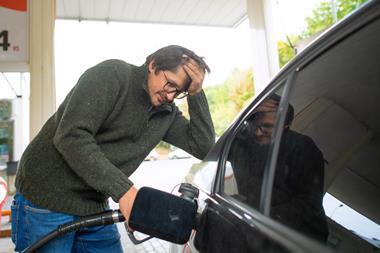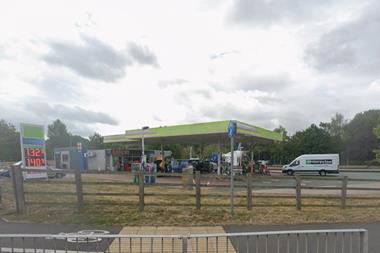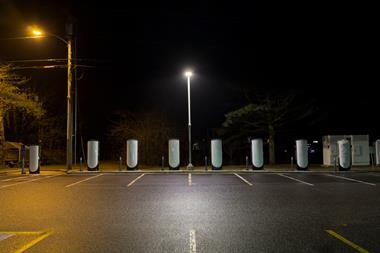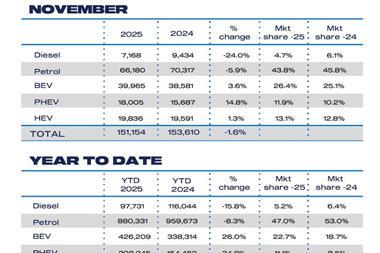Once again Catalist is pleased to be able to provide Forecourt Trader with the UK summary for its Fuel Market Review 2009. The data shown in the following tables is from Catalist’s latest release of its UK database in May for the first quarter of 2009.
== Summary ==
Looking back to last year’s review, the dominant issue was the rapidly increasing price of fuel at the time. The chart below shows that the dramatic increases that occurred from the end of 2007 - and which peaked in mid July 2008 - had been unprecedented, and with it the wide difference between the prices of petrol and diesel at the pump (mid July 2008 - petrol £1.19ppl/diesel £1.33ppl). What we probably didn’t expect was the equally dramatic fall through the second half of 2008 with the market bottoming out in early January 2009. The retail price of diesel dropped by 35ppl over the last six months of 2008 and that included a duty increase of 2ppl during the period! The price of petrol was back to 2006 levels which must have been helpful to all those consumers having to cope with the country’s economic ills. The press and the consumers’ focus on pump prices for much of the period caused a continuing shift of fuel volumes towards the hypermarkets and many of the hypermarkets are up on a like-for-like basis with much of the rest of the industry down or at best on a par for fuel sales. However, in contrast, shop sales have tended to hold up, with consumers moving towards more top-up visits to the local forecourt c-stores rather than visiting the busy hypermarket for their daily requirements.
The industry continues to adapt and one of the new ways relates to the price differential between petrol and diesel. In July 2007 the difference at the pump between petrol and diesel was less than 1ppl but by July 2008 this had widened to nearly 14ppl. While the current differential has now narrowed back to about 6ppl this difference in prices between the grades has been very helpful to the industry in order for operators to juggle with their margins in the face of continuing fierce competition and tales of falling fuel sales.
Despite the country’s economic woes, the failures on the high street and the roller-coaster of fuel prices, 2008/9 has continued where the previous year left off, and it’s been another positive year for the sector since the last Forecourt Trader Fuel Market Review in 2008. I am not suggesting the industry is really any more profitable but to my knowledge we have not had any failures of any of the major players in our sector and we have seen new-to-industry and rebuilt sites coming on stream right through the period. Indeed a couple of months ago, in February, the new M40 Services at Beaconsfield opened with what is probably the largest forecourt in the UK. The Shell-branded site has 36 fuelling positions from three banks of six pumps, plus separate HGV diesel facilities, a huge shop, car wash and acres of concrete!
There is definitely continuing room for optimism in the industry and while margins have continued to be squeezed, forecourt property prices have held up much better than in any other property sector. While the credit crunch may have reduced the number of people in the queue to buy sites, there are still buyers out there with ready access to funds for the right sites. A flick through Forecourt Trader will tell you that there are still a lot of people out there who are optimistic about the future and looking to buy.
As we have said before, to the outside world the UK forecourt market may be mature with not much going on, but to the readers of Forecourt Trader this market is in continuous flux with changes occurring right across the sector almost on a daily basis. Catalist will continue to monitor and survey the UK market in order to supply its clients with up-to-date market information and will continue to provide regular summaries to the industry. It’s been said before but one thing for certain is that when we come to look at the data for the Forecourt Trader Fuel Market Review for 2010 there will have been a lot more changes and there will almost certainly have been even more surprises.
== Market structure ==
As we work quite closely with it, I am not quite sure how the Energy Institute managed to show a small increase in forecourts in its annual Retail Marketing Survey. Compared to the Forecourt Trader Fuel Market Review 2008, we see that UK site numbers have declined by a further net 210 sites and we are now reporting 9,176 open retail sites in the UK with an average fuel volume of just over 4.1mlpa, and shop sales of £514,000 per annum.
Slightly against the trend of the past few years, we saw an increase in the number of sites closing last year to 295. Of these closures 277 were dealer sites of which the majority were small unbranded or minor branded sites.
During the period we also saw the opening of around 24 new-build forecourts in the UK - 12 by the multiple retailers, four new company-owned sites and eight new dealer sites. I have already mentioned the opening of the new Shell site at the M40 Beaconsfield Service Area and we also had significant investment in new sites at three other service areas - BP Moto Wetherby on the A1, Shell on the A6 at Thurcaston and Shell on the A50 near Derby.
A couple of years ago we saw the start of a trend towards bringing back on-stream former closed or obsolete sites. With the high market prices of forecourts and the issues with planning for brand new sites, it was sometimes the easier option to find a former site and to redevelop it. Last year we recorded 60 old closed sites being re-opened - many of which had a complete rebuild. This included BP rebuilding a couple of its own company sites closed many years ago and the new brand Applegreen rebuilding and re-opening three old sites.
There are now 5,784 independent dealer sites in the UK, with something approaching 30% of these sites being operated by dealer groups with three sites or more. The average dealer site now sells 2.3mlpa and turns over £8,000 per week through the 59sq m shop.
With only 13% (1,207) of the sites, the multiple retailers have gained a further small amount of market share and now control over 36% of motor fuel sales - the largest single sector. The dealer sector has 63% of the sites and 35.4% market share.
The regional breakdown of the forecourt sector continues to make interesting reading with the market dominated by the South East region, which has a quarter of the sites and one third of the UK’s motor fuel and forecourt shop sales concentrated there. The closures were generally spread equally around the UK with the exception of Northern Ireland which we believe actually had more sites open than close last year!
The joint ventures between the oil companies and the multiple retailers have been much quieter last year with the cessation of the Shell/Sainsbury’s operation and the sites reverting back to their former state. The BP/M&S Simply Food programme continued slowly and the Esso/Tesco Express alliance operation only added a couple of sites last year. The Co-operative Group takeover of Somerfield will result in the Co-op becoming a major player in the dealer market and the combined forecourt network of the group will be challenging Malthurst as the top independent dealer group in the UK. Waitrose has been quiet on the forecourt side but has recently trialled with Welcome Break at a motorway service area competing with the established Moto/M&S Simply Food offer. Tesco is continuing its relentless drive forward with eight new forecourts last year and Asda has continued with a couple of new sites and its rebuild conversion programme to unmanned operation.
== Market shares and brands ==
Looking at the brand profiles in table 1, BP added 35 sites to its network last year compared to a loss of 79 sites by Texaco and 66 by Total. We included GB Oils as a ’new’ minor brand last year and it has continued to increase its presence in 2008 by a further 63 sites to 295 taking on some of the former Texaco subsidiary brands. The unbranded sites took a big hit last year with the loss of 125 sites (12%), down to 885 as they remain most vulnerable to the continued squeeze on margins and to the pressures on the environmental factors surrounding forecourt operation.
In the dealer sector Texaco (and its remaining subsidiary brands) is still the major supplier with 1,078 dealer sites followed in second place by BP with 841, and in third Total with 468 sites. We also saw the introduction of the new Applegreen brand with four sites. Harvest Energy increased its presence in the dealer sector with its new brand on six sites. The Jet brand has left Northern Ireland, and its sites will eventually convert to the DCC (GB Oils) owned brand of EMO Oil in due course.
== Forecourt shops ==
Overall the forecourt shop sector has continued to top £4bn-worth of sales per year in the UK. Similarly to last year in the dealer sector, shop sales are close to £2bn per year with the average dealer forecourt shop of 59sq m now turning over close to £400,000 a year. Within the dealer sector 15% of the sites (890) now have a full c-store. As expected the number of sites with alcohol licences and ATM machines has continued to grow with one in 2.5 dealer sites now having an ATM and one in four dealers now holding an off licence.
As many of you who go to the Forecourt Trader of the Year Awards evening will know, Northern Ireland continues to be at the forefront of the forecourt shop market and this is illustrated by the select band of Maxol dealers in Northern Ireland who have the highest average shop sales at just over £900,000 per year - an average I’m sure that all the other brands would like to aspire to!
== Data source ==
Experian Catalist is a leading source of petrol forecourt information in the UK and beyond. Its comprehensive database covers most of Western Europe and the information is continuously maintained by way of site visits, telephone surveys, client feedback and market intelligence. In addition to its data and fuel-price services, Experian Catalist also provides a range of analysis and consultancy solutions to organisations working in forecourt retailing to support strategic, tactical and operational decision making. It is part of Experian’s Business Strategies Division.




























No comments yet